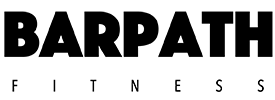During weightlifting, we have all been taught to exhale on exertion and under no circumstances should we hold our breath. However, this is not always true for heavy lifts such as the squat and the deadlift. In today’s blog, we want to discuss the Valsalva maneuver and properly bracing your core before a big lift.
Diaphragmatic Breathing
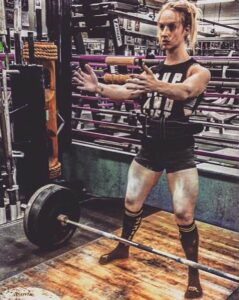
Proper preparation for the squat and the deadlift should always be mastered before the movement is loaded. Setting up for the lift is just as important as the lift itself. A truly braced core takes practice. The Valsalva maneuver is a breathing technique used to create intra-abdominal pressure. This method protects the spine and takes pressure off of your lower back when completing heavy compound lifts. When you breathe through the diaphragm and brace the core, you increase your ability to lift heavier loads safely and properly while maintaining core stability – which will lead to greater strength overall. Many times, this practice is the difference between a PR or no PR.
If you do not know how to breathe through the diaphragm, then you need to learn so you can perform the Valsalva maneuver properly. If you’re not sure, try the test below. During diaphragmatic breathing, on the inhale you should be thinking about filling your stomach with air or expanding your rib cage. So, your belly should distend forward if you are doing this properly. To distinguish between chest breathing and diaphragmatic breathing, place one hand on your chest right below your clavicle and the other on your belly. Take a big breath in, if the hand on the chest rises first, you’re chest breathing. Practice trying to breathe through your diaphragm by letting the hand on the belly raise first. This may take some time, but it makes all the difference. You’ll get a fuller, deeper breath.
Bracing vs Hallowing
Complete bracing requires not only breathing, but tightening the core. Think about what you would do if someone was about to punch you in the stomach (other than dodge or defend). You would brace your core for the blow. HOWEVER, there is a difference between bracing and hollowing. Hallowing is thought of as “pulling the belly button toward the spine” – which you may have heard in Pilates or other practices. This is also something body builders practice on stage when doing an abdominal pose. This is NOT the same as bracing. Hallowing activates your transverse abdominis, sure, but it can put you in a less stable position and does not provide the same support from other core muscles like bracing does.
When bracing, think OUT and DOWN instead of in and up.
Before a squat, you want to engage the core this way, but ALSO consider the glutes and the lower portion of your core. Squeezing the glutes may help you to think about “pushing down” on the pelvic floor which will help you brace. Practice hallowing and bracing so that you can feel the difference. Hallowing will pull your abs in and up while bracing will activate more of the core musculature and allow you to expand your belly out on your breath.
Squat Set-Up Example
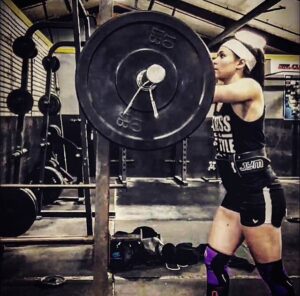
Before the squat, set up in a tall position – hands placed on the bar. Many people prefer taking their first big breath BEFORE getting under the bar in order to create stability in a taller position that allows for an overall larger breath. Some people prefer to take the breath under the bar. As a beginner, keep in mind that this will also sometimes shorten the rib cage and make it slightly more difficult to take a giant breath. We typically teach both: one breath before stepping under and un-racking the bar (hold the breath as you un-rack then release once you have walked out the bar but maintain core stability), one breath after your walk-out and before your descent. Consider thinking about squeezing the glutes to assist with bracing, take a big breath and fill the belly with air, bracing down and out with the core and hold in that big breath. Begin your descent and maintain the core stability all the way down into the hole. The exhale of the breath should occur somewhere near the top end of the lift. Keep in mind this method of breathing will increase blood pressure and heart rate for a small period of time. Very, very intense loads and large breaths have occasionally been known to create some dizziness after a lift due to the increase in pressure. This typically only happens under very heavy loads or with a very large, practiced breath. In powerlifting, the benefits far outweigh the risk for most lifters and a large breath not only feels supportive, but keeps the spine in a safe position and adds pounds to the lift.
Weight Belt or Nah?
For heavier loads, many people utilize powerlifting accessories like a weightlifting belt. Think of the belt as an additional tool to increase your intraabdominal pressure. If used properly, you will experience improved biomechanics during your lift. The weightlifting belt also helps reduce excess spinal flexion, lateral flexion, or extension in the spine. In other words, you will be forced to lift through your posterior chain and quadriceps as opposed to the back taking over (jimstoppani). This study suggests that utilizing a weight belt during training may reduce disc compressive force and improve lifting safety.
You should be making your belt as tight as possible while maintaining comfort when lifting so you can thoroughly brace your abdominals against it. You will notice how it is significantly easier to support heavier loads if you practice the Valsalva maneuver.
Make sure your belt isn’t wedged against your hips after you tighten it. This will impede your lifting as it will be uncomfortable and digging into your skin. Some people prefer a higher position while others wear the belt lower. Try different methods and see what works for you.
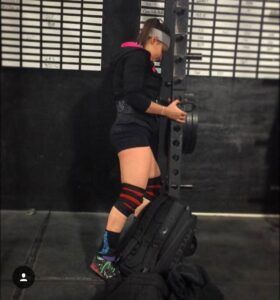
Training with a belt is optional. Many people only train with a belt at higher loads. Our suggestion is to train lighter loads beltless and practice bracing the core without the assistance of the belt. We typically program the use of a belt only when loads reach around or above 85% of 1RM but this is also something you can adjust accordingly.
Weight belts can be tapered or one width all the way around. Traditionally, powerlifting belts are not tapered because the same width all the way around will offer maximum support and surface area to brace and breathe against. However, some people prefer a tapered belt for comfort. If you are competing, check your federation’s rules on width and thickness for the weight belt.
Looking to elevate your fitness game? Tune in to the ‘Stronger than your Boyfriend‘ podcast for expert advice, then enroll in our personal training program! Whether you seek workout tips or individual coaching, we’ve got you. Transform your body and mindset today!
Heather & Katie
The Power Couple
Resources:
Harman, E. A., Rosenstein, R. M., Frykman, P. N., & Nigro, G. A. (1989). Effects of a belt on intra-abdominal pressure during weight lifting. Medicine & Science in Sports & Exercise, 21(2). doi:10.1249/00005768-198904000-00012
Stoppani, J. (n.d.). Belt it Out. Retrieved August 22, 2016, from http://www.jimstoppani.com/home/articles/belt-it-out
